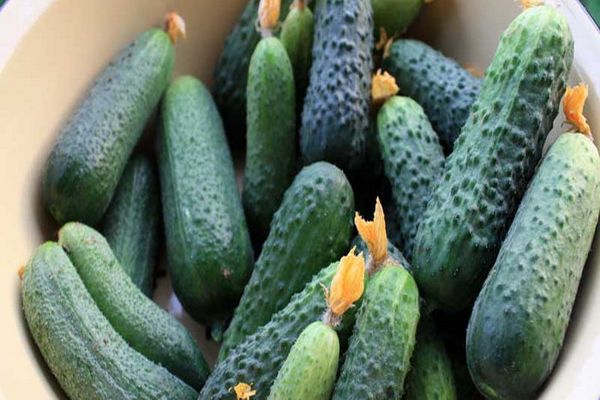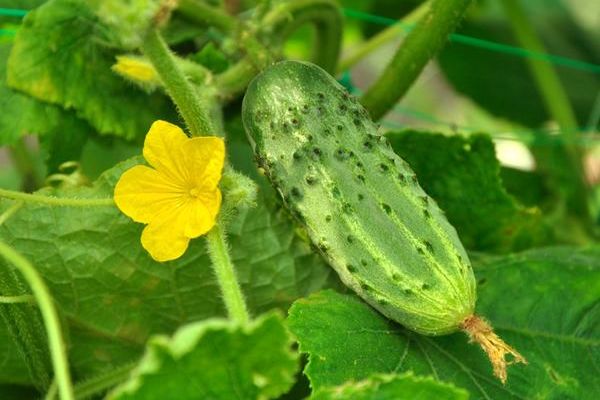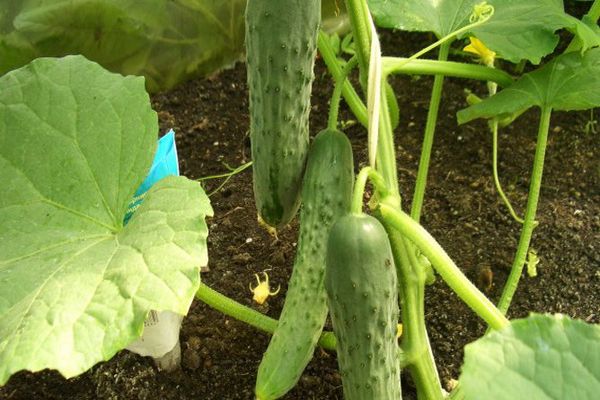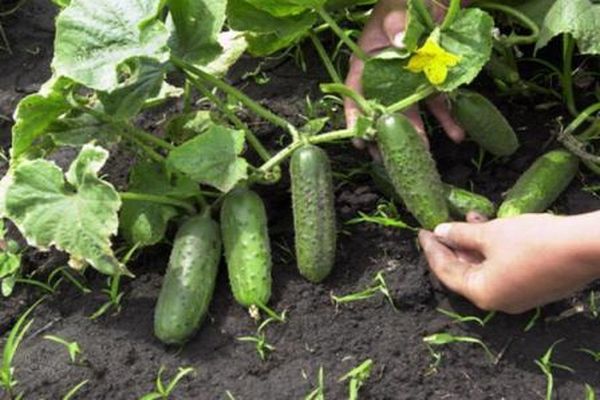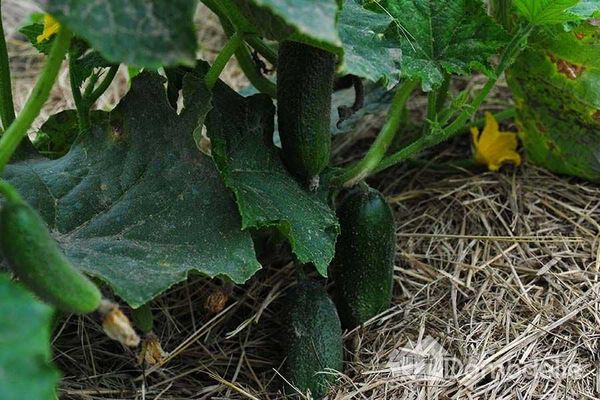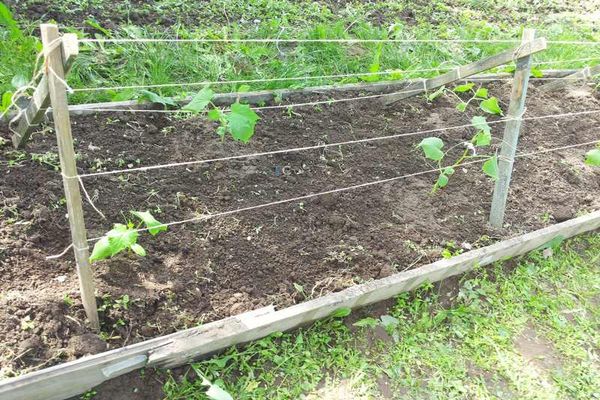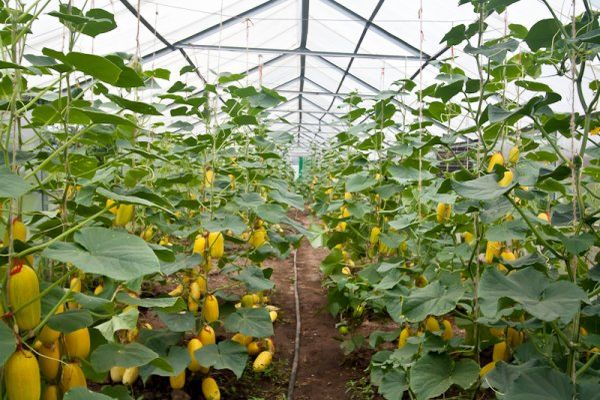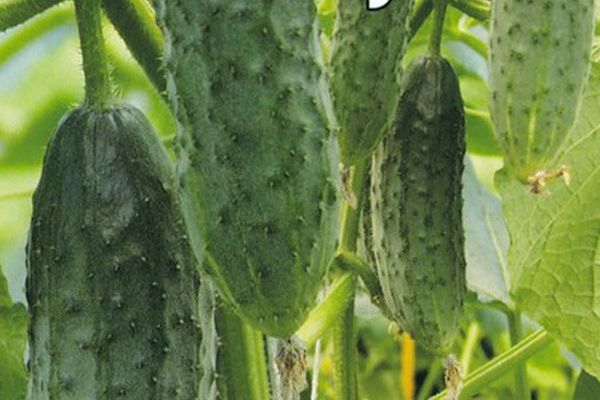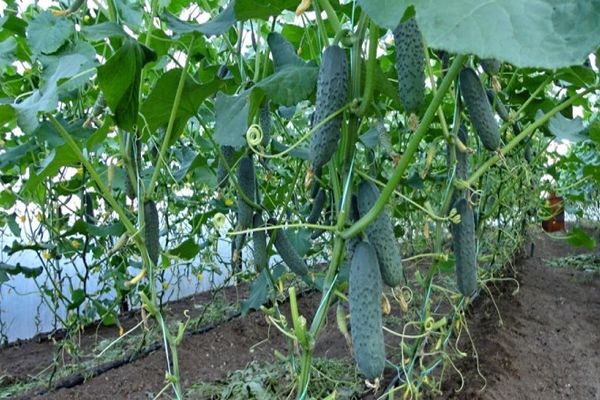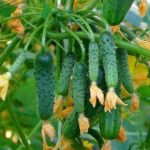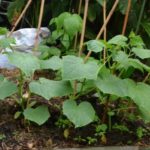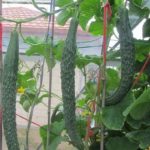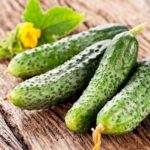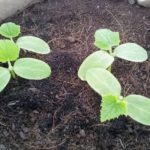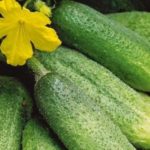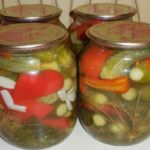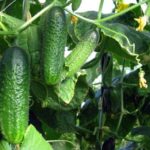Early varieties of cucumbers allow you to harvest within two months from the moment of germination, and sometimes even earlier. In order not to encounter difficulties, you should choose the right type and follow all recommendations for caring for it.
Variety of early vegetable crops
Early ripening varieties of cucumbers allow you to harvest the harvest several weeks earlier than usual. They begin to be planted in the second half of May. Which cucumbers are the best is determined by each gardener for himself, based on descriptions and reviews.
Barwin's cucumber belongs to the parthenocarpic, indeterminate group (does not require pollination by insects). The branches are not too spreading. Dark green cucumbers with whitish stripes are about 10.5 cm long. Fruiting is long, the hybrid is resistant to many diseases.
The Nightingale cucumber has medium-early fruit formation. The plant is branched with indeterminate growth, pollinated by bees. The fruits are covered with large whitish tubercles, the edges are black, weight about 75 g, length about 11 cm. Characterized by disease resistance.
Cucumber Bonus F1 belongs to parthenocarpic, indeterminate plants. The lashes do not spread much to the sides. Grown cucumbers have dark green fruits with whitish stripes and have small tubercles with a white edge. The hybrid is resistant to many pathogens.
The May F1 cucumber begins to bear fruit after 44 days. Belongs to the bee-pollinated group. If cucumbers are grown according to all the rules, then they are almost never affected by infections. Zelentsy are elongated (up to 18 cm), with medium-sized tubercles. They store well and do not turn yellow. It is recommended to replant with seedlings.
The Divo Divnoye cucumber belongs to the parthenocarpic type. The cylindrical fruits are formed with small tubercles and white pubescence, their length reaches 11 cm. The Divo Divonoye F1 variety can be planted as seedlings or seeds, but in well-warmed soil (approximately the end of May).
The early ripening cucumber variety Gypsy F1 belongs to the indeterminate, bee-pollinated group of plants. The fruits begin to ripen on the 43rd day. Dense, short greens, 10 cm long, are covered with sparse tubercles with black spines. It is resistant to many diseases. Recommended mulch the soil in cucumber beds.
Cucumber Nightingale F1 is recommended for growing in an open area. It is characterized by mid-early crop ripening; the inflorescences are pollinated by bees. Light green fruits, 11.5 cm long, are distinguished by sparse large tubercles with black pubescence and whitish spots.
Cucumber Dasha is a bee-pollinated hybrid that will produce ripe fruits in 47 days. The stem can stretch up to 2 meters, the lashes are not too spreading. Zelentsy have longitudinal stripes; there are not very many tubercles with white pubescence. The length of the fruit is approximately 10.5 cm.
Crispina open ground cucumbers with medium-early ripening periods tolerate bad weather well. The variety resists many diseases. Therefore, Crispina can be safely chosen by beginners. Fruits with light stripes and spots grow up to 11 cm.
You can grow these early cucumbers in a greenhouse. Care is no different; sowing dates may shift slightly. If you choose varieties of cucumbers for a polycarbonate greenhouse, then the first harvests can be harvested earlier.
Record-breaking deadlines
Ultra-early ripening varieties and hybrids are capable of forming ovaries in a very short time. The fruits retain all their sweetness and density.
Characteristics of ultra-early varieties of cucumbers:
In first place is the Mares cucumber (it is a parthenocarpic hybrid). One of the fastest ripening varieties. You can start harvesting already on the 36th day. Zelentsy grows in the form of a cylinder with large tubercles, 9.5 cm long. It rarely gets sick and tolerates temperature fluctuations well.
Cucumber Krokha is an ultra-early ripening variety. You can enjoy cucumbers already on day 39. They are covered with large tubercles with a white edge, regular, rounded shape. The variety resists many diseases and tolerates low temperatures.
The Saracen F1 cucumber produces a bountiful harvest, rarely gets sick and tolerates bad weather well. Belongs to the parthenocarpic, early type of plant. It begins to bear fruit on the 38th day. Smooth, cylindrical greens grow up to 14.5 cm in length. There are tubercles with small spines on the surface.
The parthenocarpic, ultra-early cucumber variety Karaoke F1 will give a rich harvest already on the 39th day after planting the seedlings. Regularly shaped greens up to 12 cm in length are formed with large tubercles. The hybrid tolerates heat well and is resistant to many infections.
Cucumber Children on branch F1 is a bee-pollinated, early-ripening hybrid. The fruits can begin to be collected after 42 days. It is distinguished by an abundant harvest with excellent taste. Cylindrical greens are covered with small tubercles. Plant immediately with seeds or seedlings.
Super early cucumbers Moscow dude will bear fruit after 41 days. Pollination requires free access of insects. The green fruits have white stripes and small spines. The length of the greens is approximately 10 cm. The yield will please any vegetable grower. The Moscow Dude variety is resistant to many diseases, especially bacteriosis.
Cucumber Ataman F1 belongs to the parthenocarpic type. Characterized by indeterminate growth and medium branching. Fruiting begins after 42 days. Fruits with frequent tubercles reach 15 cm. Fruiting persists at low temperatures and low light. Resists infections well.
Early varieties of cucumbers for open ground include Kroshka Raccoon. The variety begins to ripen from the 40th day. It is a self-pollinating hybrid. The lashes are short and compact.The fruits grow up to 9 cm in length, are covered with sparse tubercles with white spines, and have light stripes. Shows resistance to a certain number of diseases.
Cucumber Advance F1 begins to enter the fruiting period after 42 days. Is determinant parthenocarpic cucumber species, with branched side shoots. Greens are short, with small white stripes and tubercles with a white edge. They resist disease well and produce lots of sweet, crunchy fruit.
Numerous harvests in a short time
Among the early ripening varieties of cucumbers for open ground, you can choose those that are distinguished by high yields.
The Gypsy cucumber will delight you with a high yield, but for this you need to provide proper care. The hybrid belongs to the bee-pollinated, early-ripening group of vegetables. It begins to bear fruit after 44 days. Shows good resistance to infections. The cylindrical greens grow to a length of approximately 10.5 cm.
The Brigadier F1 variety is an early ripening, bee-pollinated hybrid with good tolerance to adverse factors. These are not only early ripening, but also productive cucumbers. The first fruits can be tasted after 48 days. You can enjoy fruits grown in a greenhouse even earlier. The bright green fruits grow up to 10-12 cm in length, covered with large tubercles with brown spines.
Harvest Delpin F1 cucumbers are distinguished by long fruiting. Parthenocarpic, ultra-early ripening type. Zelentsy are short, smooth, about 11 cm in length with large tubercles on the surface. Shows good disease resistance.
The Puccini F1 hybrid is characterized by a compact bush and does not require pollination by bees. The length of the dark green fruits, covered with large tubercles, is about 11 cm.Numerous crops ripen at the same time.
Semcross cucumbers consistently produce high yields. The plant is not susceptible to disease. Characterized by an indeterminate type of growth, the lashes are short and not too spreading. Zelentsy grow up to 10.5 cm, have large tubercles with black pubescence. There are light white stripes and spots on the surface.
The productive varieties are replenished by the hybrid Daria F1. This is a self-pollinating, indeterminate plant with cylindrical fruits up to 10 cm long. The surface is covered with small tubercles with whitish spines.
All of these very productive early varieties of cucumbers can be planted not only in open beds, but also in a greenhouse. They are also adapted to greenhouses.
Greenhouse vegetables will taste no different. The care required is almost the same.
How to grow early cucumbers
To harvest early, it is not enough to choose early-ripening cucumbers; you also need to stay within the limits of sowing planting material and comply with certain growing conditions.
The area where the cucumber beds will be planted should have free access to sunlight. The site must be protected from through winds. Early ripening varieties Cucumbers need to be watered properly and regularly. It is necessary to apply fertilizers to the soil not only in the spring, but also during autumn digging.
Advice: “Plant cucumbers on a plot of land where vegetables such as cabbage, tomatoes, peppers, legumes, and onions previously grew. The cucumber itself is a favorable precursor for almost all vegetable crops.”
The earliest varieties can be planted in open ground using seeds or seedlings. Before sowing, seeds must be disinfected in a weak solution of potassium permanganate and placed in solutions that stimulate growth and strengthen the immune system.
It is recommended to germinate the seeds.Sowing begins a month before transplanting seedlings, approximately in the second half of April.
Make shallow holes in the beds, water, fertilize and sow one seed, with an interval of about 7 cm; the distance between the beds should be at least 50 cm. It is better to transplant seedlings in the evening; the holes are prepared in advance. It should be remembered that the soil temperature should be warmed up to 14 degrees.
Seedlings begin to be planted at the end of May. By this time, 4 leaves should unfold. Near each seedling you should dig a wooden peg, from which a fishing line is pulled upward. If the cucumber vine stretches vertically and not along the ground, the risk of disease is reduced and the plant develops healthy and strong.
Since the roots of cucumbers are close to the surface of the earth, loosening must be carried out with extreme caution. It is best to mulch. A layer of mulch retains heat and moisture in the soil, protects against cold and disease.

